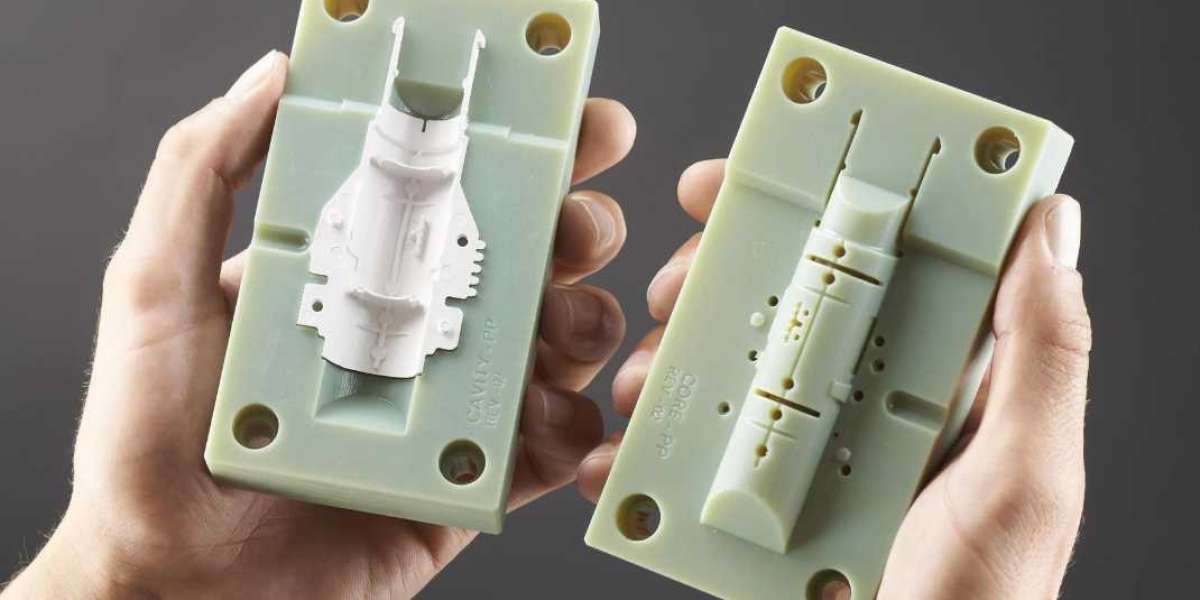In the world of product development, speed and accuracy are key. Quality prototype injection molding has become one of the most valuable techniques used by manufacturers, engineers, and product designers to bring their concepts to life quickly, with exceptional precision and at a fraction of the cost of full-scale production. This method allows companies to produce functional prototypes that closely replicate the intended design, offering an opportunity to test, refine, and optimize before mass production begins.
Whether you are designing a new consumer product, an automotive component, or a medical device, quality prototype injection molding offers distinct advantages in creating prototypes that not only look and feel like the final product but also function like it. This article will explore what prototype injection molding is, how it works, its advantages, and its applications across industries.
What is Prototype Injection Molding?
Prototype injection molding is a manufacturing process used to create plastic parts and components quickly and cost-effectively. Unlike traditional mass production, which involves producing large quantities of identical parts, prototype injection molding focuses on creating small quantities of parts for testing and development purposes.
The process involves injecting molten plastic into a mold, where it cools and solidifies to form the part. The molds used in prototype injection molding are often made from materials like aluminum, which are easier to machine and less expensive than steel molds used in large-scale production. These molds are carefully designed to match the specifications of the final product, allowing companies to test designs and perform necessary adjustments before committing to the higher costs of full-scale manufacturing.
Key Differences Between Prototype and Production Injection Molding
Volume: Prototype injection molding typically produces small quantities of parts (usually fewer than 1,000), while production injection molding is used to create large volumes (thousands or millions) of parts.
Mold Material: Prototype molds are often made from softer materials like aluminum, which are less expensive and quicker to manufacture compared to the hardened steel molds used in high-volume production.
Purpose: Prototype injection molding is used for testing, evaluating, and refining designs, whereas production injection molding is used for mass manufacturing of parts.
The Process of Prototype Injection Molding
The prototype injection molding process involves several critical steps that ensure the quality and accuracy of the prototype parts produced. Here’s an overview of the typical process:
1. Design and CAD Modeling
The journey begins with the creation of a detailed 3D design of the part using Computer-Aided Design (CAD) software. The CAD model must be optimized for injection molding to ensure manufacturability. Engineers use this design to assess part features, material choice, and moldability, ensuring that the final prototype can be produced efficiently and with minimal defects.
2. Mold Design and Production
Once the design is finalized, the next step is to create the mold. Prototype injection molds are often made from aluminum, which offers a good balance of cost and precision. The mold design must include features like runners and gates, which guide the molten plastic into the cavity, as well as any necessary cooling channels to speed up the cooling process. Molds are produced using CNC machining or other techniques, ensuring that they match the specifications provided by the CAD model.
3. Injection Molding
In the injection molding machine, plastic pellets are fed into a heated barrel, where they are melted and then injected into the mold under high pressure. The molten plastic fills the cavity of the mold, taking the shape of the part. Once the plastic cools and solidifies, the part is ejected from the mold.
The advantage of using prototype injection molding is the high degree of precision it offers. The parts produced are typically very close to the final design in terms of both aesthetics and functionality.
4. Post-Processing
After the parts are molded, post-processing steps may be required to finish the prototypes. This can include trimming excess material (flash), adding surface finishes (such as polishing or painting), or assembling parts if the prototype includes multiple components. The post-processing phase ensures that the prototype looks and feels like the final product.
5. Testing and Evaluation
One of the most important steps in the prototype injection molding process is testing. Once the prototypes are produced, they undergo various tests to evaluate their performance, durability, and fit. These tests may include functionality tests, fit checks, and material performance assessments. Testing allows manufacturers to identify any issues with the design early, so they can make necessary adjustments before moving to production.
6. Iteration and Refinement
Prototype injection molding is an iterative process. Based on testing results, the design, mold, or material may be modified, and a new prototype is created. This process of refinement continues until the prototype meets all functional, aesthetic, and performance requirements. The iterative nature of prototype injection molding allows for quick design changes and improvements, making it a flexible and effective solution for product development.
Benefits of Quality Prototype Injection Molding
There are several key benefits to using quality prototype injection molding in the product development process. Let’s explore these advantages in more detail:
1. Speed and Efficiency
Prototype injection molding significantly speeds up the prototyping phase. Since molds are quicker and less expensive to create than production molds, manufacturers can produce prototypes in a matter of days instead of weeks. This accelerates the overall product development timeline, allowing companies to bring their products to market faster.
2. Cost Savings
For companies looking to test their designs before committing to full-scale production, prototype injection molding offers a cost-effective solution. The ability to create small batches of parts without the high upfront costs of mass production is a major advantage, particularly for startups and businesses with limited resources.
3. High Precision and Accuracy
The injection molding process provides high precision and excellent surface finish, making it an ideal choice for producing functional prototypes that closely resemble the final product. This accuracy allows companies to perform realistic tests and evaluations of the prototypes, ensuring that any design flaws can be detected early.
4. Material Versatility
Prototype injection molding offers the flexibility to work with a wide range of materials, from standard plastics like ABS and polycarbonate to specialized materials like high-temperature plastics and elastomers. This versatility allows companies to test different material properties and choose the one that best suits the requirements of their final product.
5. Real-World Testing
Prototype injection molding provides the advantage of producing parts that function like the final product. This means that prototypes can be subjected to real-world testing to evaluate their performance, fit, and durability. Companies can make design changes based on actual performance data rather than relying solely on theoretical simulations.
6. Flexibility and Iteration
The ability to create prototypes quickly and affordably allows for rapid iteration of designs. Designers can make changes based on feedback and testing, and then produce new prototypes to test again. This iterative process ensures that the final product is optimized and free from design flaws before full-scale manufacturing begins.
Applications of Prototype Injection Molding
Prototype injection molding is used across a variety of industries, each benefiting from the ability to produce high-quality prototypes at a rapid pace. Some of the key sectors that use prototype injection molding include:
1. Automotive
In the automotive industry, prototype injection molding is used to create components like interior panels, trim pieces, and functional parts for testing. This allows manufacturers to test form, fit, and function before moving to mass production, reducing the risk of costly mistakes.
2. Consumer Electronics
Consumer electronics, such as smartphones, wearables, and home appliances, often require prototypes to evaluate the fit and performance of components like housings, buttons, and connectors. Prototype injection molding ensures that the final product will meet design and functionality standards.
3. Medical Devices
In the medical field, where precision and reliability are crucial, prototype injection molding is used to create prototypes for items such as surgical tools, diagnostic devices, and implants. The ability to test prototypes for functionality and performance before production is essential to ensuring the safety and efficacy of these devices.
4. Consumer Products
From kitchen gadgets to toys and sporting equipment, prototype injection molding plays a crucial role in testing and refining consumer products. By creating functional prototypes, manufacturers can test the usability, ergonomics, and durability of products before launching them to market.
5. Aerospace
The aerospace industry uses prototype injection molding to create lightweight, high-strength components for aircraft and spacecraft. The ability to quickly produce and test prototypes ensures that critical components meet strict safety and performance standards.
Conclusion
Quality prototype injection molding is an essential tool in the product development process, offering speed, cost-effectiveness, and precision. It enables manufacturers to create functional prototypes quickly and affordably, allowing for testing, refinement, and iteration before full-scale production begins. This method of prototyping helps identify design flaws, optimize product performance, and reduce the risk of costly production errors. Across various industries—from automotive to consumer electronics and medical devices—prototype injection molding is transforming the way products are designed, tested, and brought to market. By unlocking the power of this technology, businesses can ensure that their final products meet customer expectations and succeed in the marketplace.







